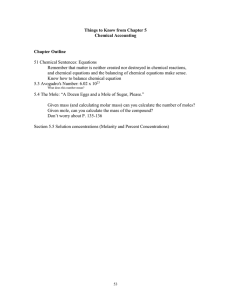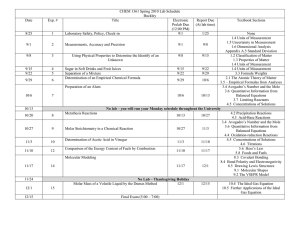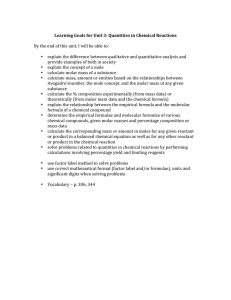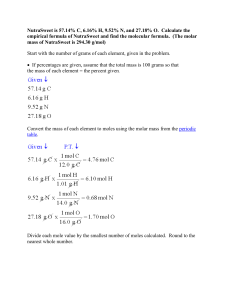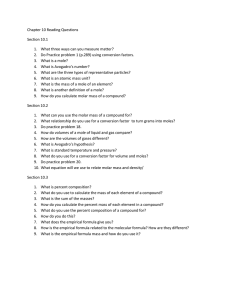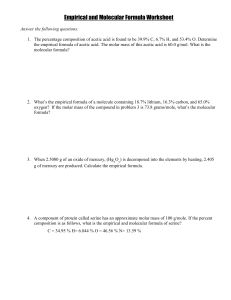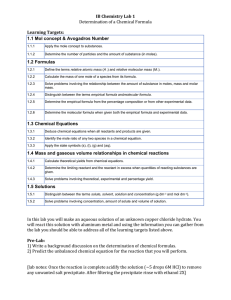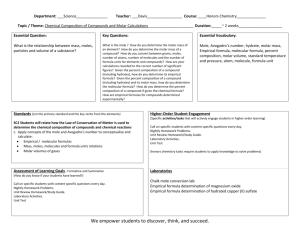Topic 1: Quantitative chemistry (12
advertisement
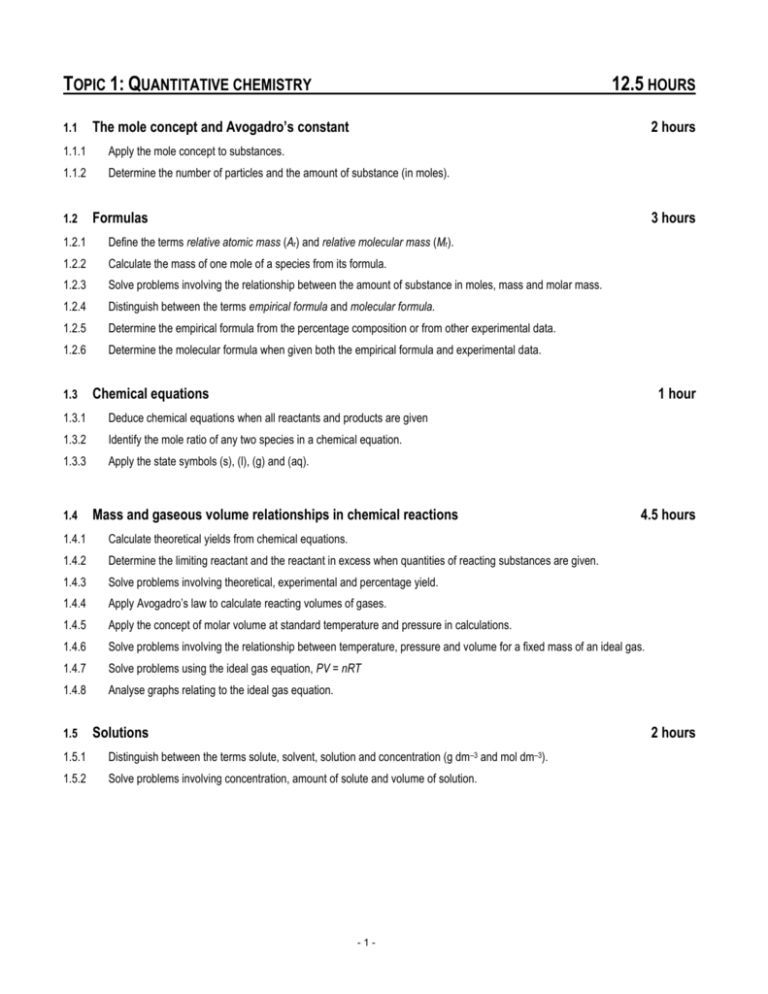
TOPIC 1: QUANTITATIVE CHEMISTRY 1.1 12.5 HOURS The mole concept and Avogadro’s constant 2 hours 1.1.1 Apply the mole concept to substances. 1.1.2 Determine the number of particles and the amount of substance (in moles). 1.2 Formulas 3 hours 1.2.1 Define the terms relative atomic mass (Ar) and relative molecular mass (Mr). 1.2.2 Calculate the mass of one mole of a species from its formula. 1.2.3 Solve problems involving the relationship between the amount of substance in moles, mass and molar mass. 1.2.4 Distinguish between the terms empirical formula and molecular formula. 1.2.5 Determine the empirical formula from the percentage composition or from other experimental data. 1.2.6 Determine the molecular formula when given both the empirical formula and experimental data. 1.3 Chemical equations 1 hour 1.3.1 Deduce chemical equations when all reactants and products are given 1.3.2 Identify the mole ratio of any two species in a chemical equation. 1.3.3 Apply the state symbols (s), (l), (g) and (aq). 1.4 Mass and gaseous volume relationships in chemical reactions 4.5 hours 1.4.1 Calculate theoretical yields from chemical equations. 1.4.2 Determine the limiting reactant and the reactant in excess when quantities of reacting substances are given. 1.4.3 Solve problems involving theoretical, experimental and percentage yield. 1.4.4 Apply Avogadro’s law to calculate reacting volumes of gases. 1.4.5 Apply the concept of molar volume at standard temperature and pressure in calculations. 1.4.6 Solve problems involving the relationship between temperature, pressure and volume for a fixed mass of an ideal gas. 1.4.7 Solve problems using the ideal gas equation, PV = nRT 1.4.8 Analyse graphs relating to the ideal gas equation. 1.5 Solutions 2 hours 1.5.1 Distinguish between the terms solute, solvent, solution and concentration (g dm–3 and mol dm–3). 1.5.2 Solve problems involving concentration, amount of solute and volume of solution. -1-
